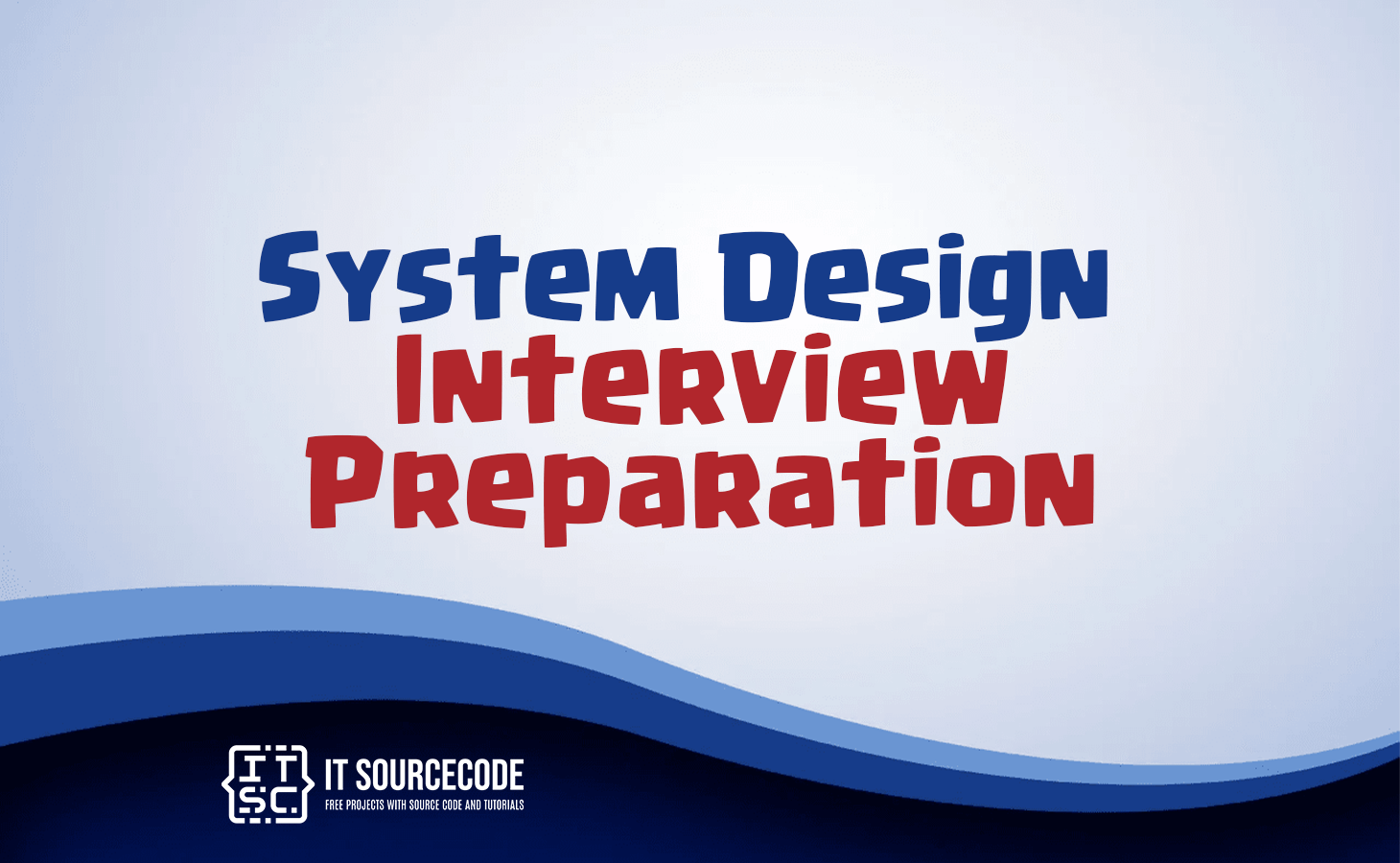SYSTEM DESIGN INTERVIEW PREPARATION – In this article, we’ll demystify the often-daunting challenge of System Design Interview questions.
Many engineers, having never worked on large-scale systems, find it overwhelming to explain how to build one, especially given the open-ended nature of System Design interview questions.

What I learned through hundreds of System Design Interviews?
Before joining Educative, I participated in numerous interview loops as both interviewer and interviewee.
Working on web-scale systems at Facebook and Microsoft taught me vital skills for the System Design Interview: quickly grasping distributed systems’ fundamentals and applying them to real-world problem-solving, as well as evaluating candidates during these interviews.
Surprisingly, direct experience with large-scale systems is not the main focus of the interview; successful candidates often have limited experience in this area.
The key is to prepare with the intention of applying the gained knowledge.
How to prepare for system design interview?
System Design Interviews (SDIs) involve candidates designing web-scale applications like Instagram or YouTube.
Unlike coding interviews, SDIs are open-ended discussions with no definite answers. The interviewer assesses the candidate’s ability to discuss system aspects and adapt to evolving requirements.
Imagine a collaborative whiteboard session with a colleague to design a large-scale system while understanding requirements, scope, and constraints.
To excel in SDIs, prepare in three areas: distributed system fundamentals, architecture of large-scale web apps, and designing distributed systems. These areas are interconnected, and experience in designing large-scale systems enriches your knowledge.
Distributed system fundamentals
As with any subject, starting with the fundamentals is key. Understanding the principles of distributed systems sets the stage for knowing what is and isn’t achievable in a particular system.
It enables you to comprehend the limitations of specific architectures and the compromises required to meet certain objectives (for instance, choosing between consistency and write throughput).
It’s critical to comprehend the advantages, disadvantages, and objectives of distributed systems, and to be conversant in topics of this nature.
a. Data Durability and Consistency
Understand the distinctions and consequences of failure rates in storage solutions and corruption rates during read-write processes.
b. Replication
The essential factor in achieving data durability and consistency lies in replication. Replication not only involves data backups but also enables the ability to repeat processes on a large scale.
c. Partitioning
Also referred to as shards, partitions split data among various nodes in your system. While replication disperses the data, partitioning disseminates processes across nodes, reducing the dependence solely on replication.
d. Consensus
Involving nodes situated in Seattle, Lahore, and London, the objective is to record and synchronize a system request at 7:05 am Pacific Daylight Time.
The main challenge is to achieve consensus among the remote nodes despite data packet travel time. This consensus ensures the prevention of faulty processes and maintains consistency and replication of data and processes across the entire system.
e. Distributed Transactions
Once consensus is reached, the focus shifts to committing transactions from applications to databases with fault checks by each resource involved.
This process involves two-way and three-way communication among participant nodes to handle reading, writing, and committing.
To gain a deeper understanding of modern System Design, it is highly recommended to explore the course “Grokking Modern System Design for Software Engineers & Managers” offered by Educative.
Designing distributed systems
Preparing for System Design interviews may seem like a lot, but with a solid foundation, it can take just a few weeks.
Once you understand the basics of Distributed Systems and Web Architecture, you should apply this knowledge to design practical systems
This practice will equip you with the confidence to tackle the System Design interview.
When you’re ready to practice, you can take on real-world interview problems and explore tips for building various web services.
For interactive design problems, “Grokking Modern System Design for Software Engineers and Managers” is an excellent resource, as it has been validated by engineers from Facebook and Microsoft who designed the systems frequently discussed in interviews.
Conclusion
In today’s connected world, System Design and distributed systems are ubiquitous. Technical interviews, especially in major tech companies, are increasingly focused on System Design questions.
Being well-prepared is essential, as common topics include URL shorteners, CAP theorem, databases, data models, latency, algorithms, and more.
Distributed systems are vital for modern software engineering, and proficiency in this area will benefit your career in System Design Interviews.

